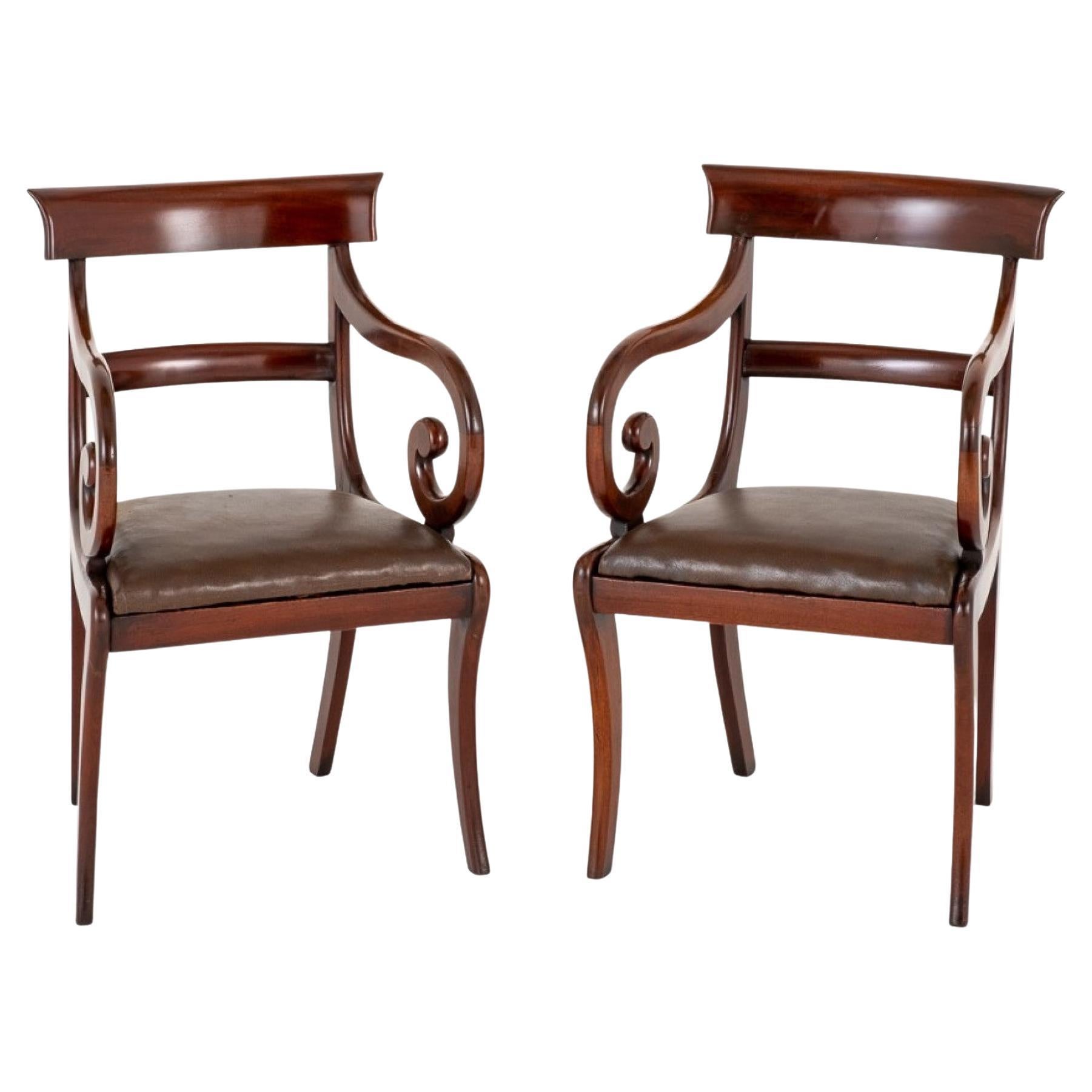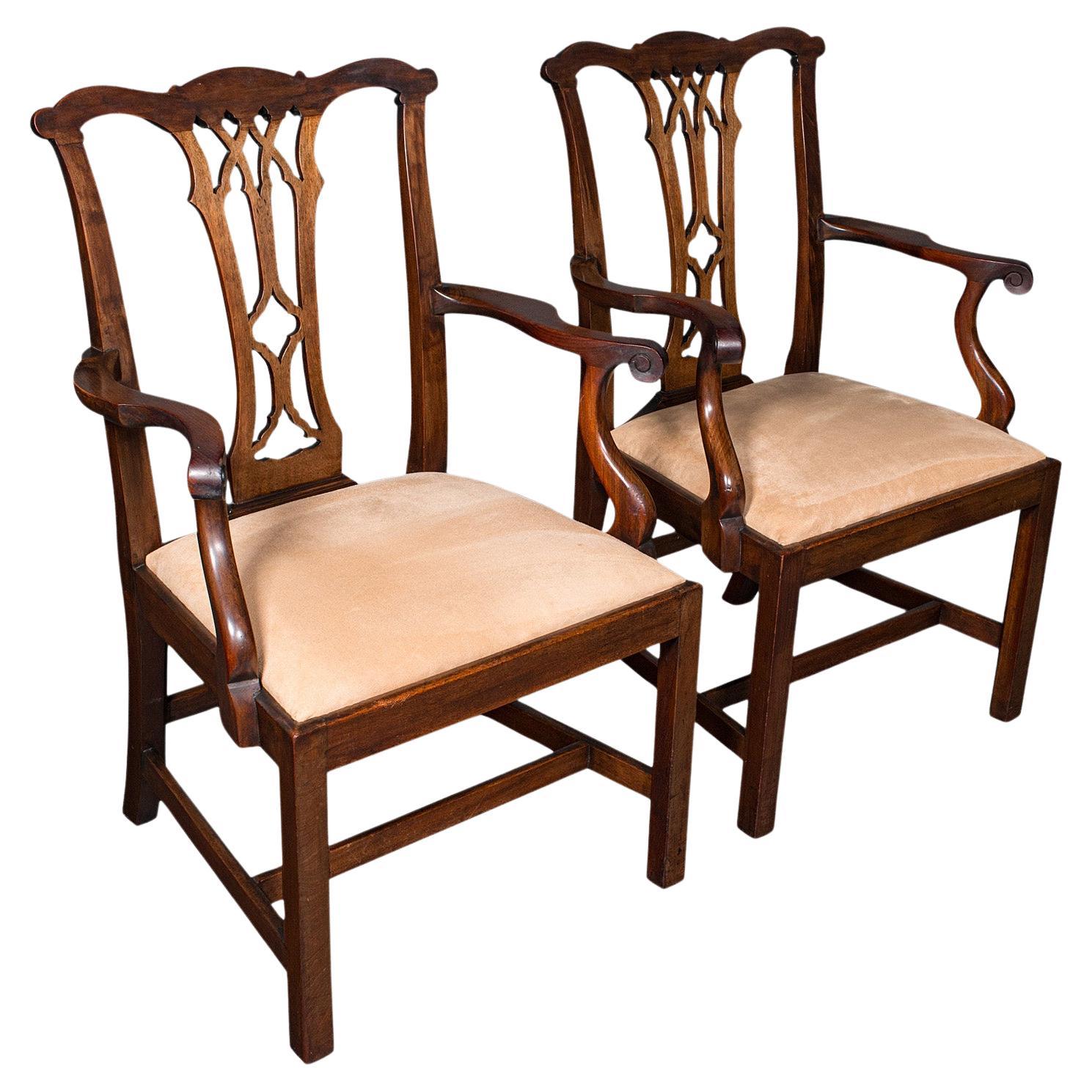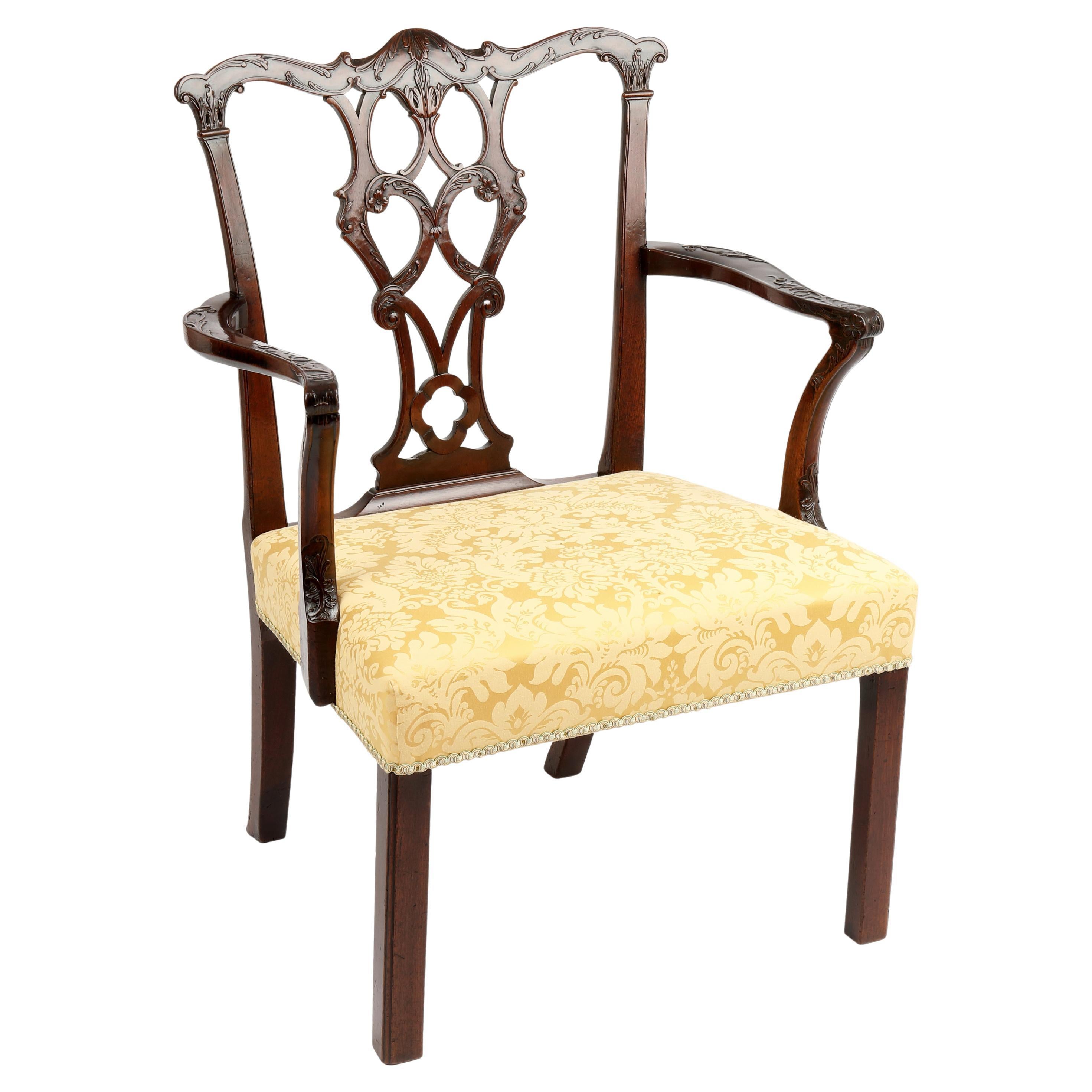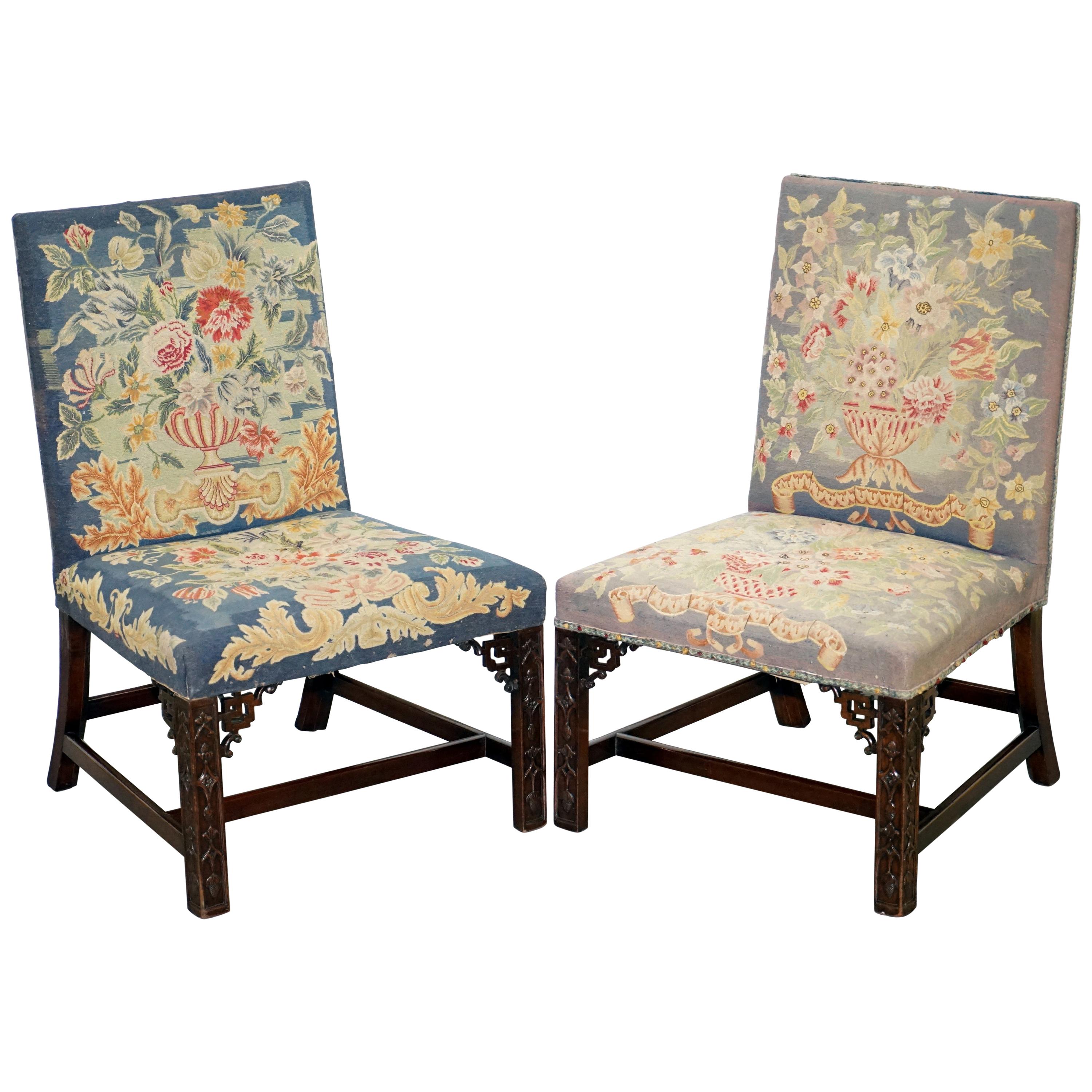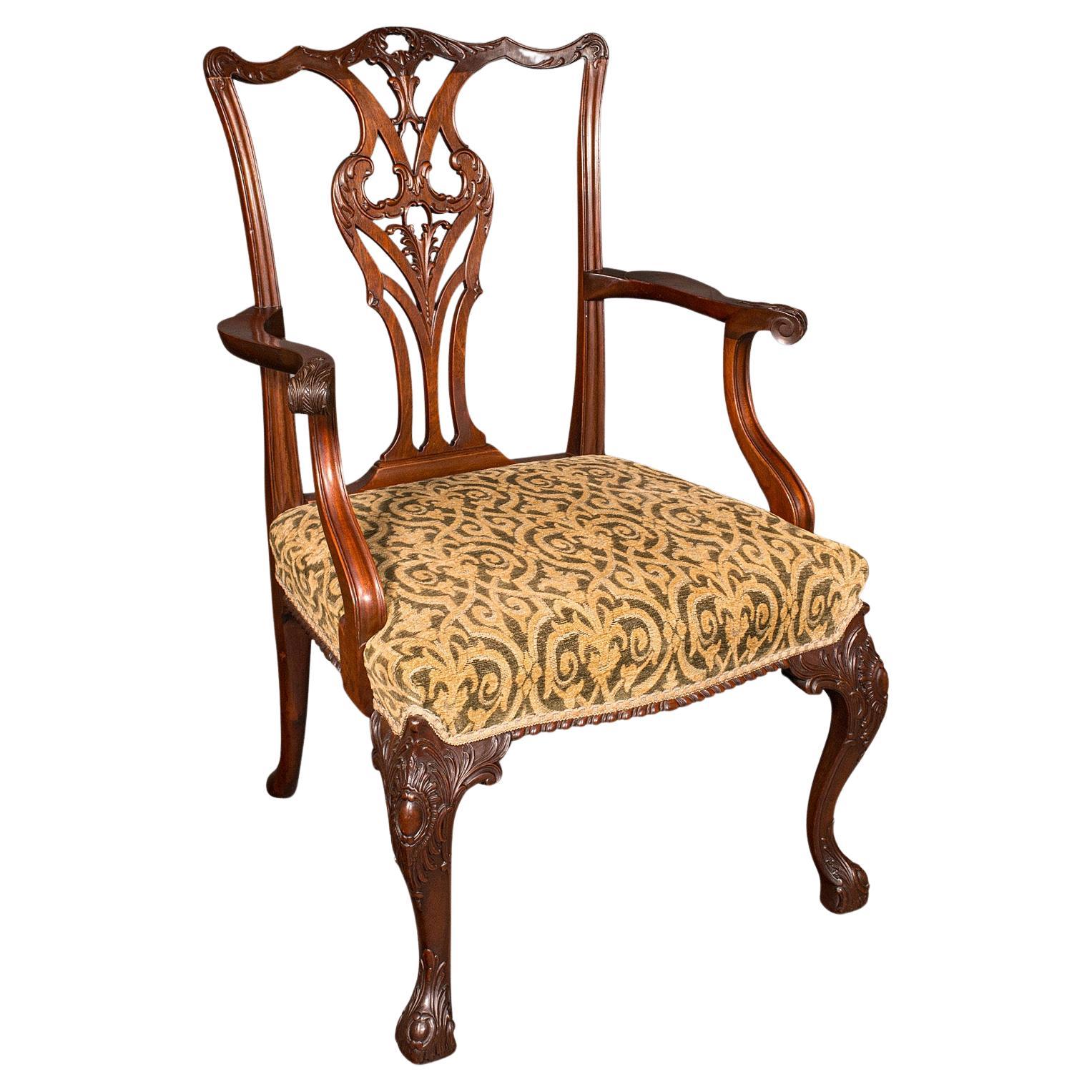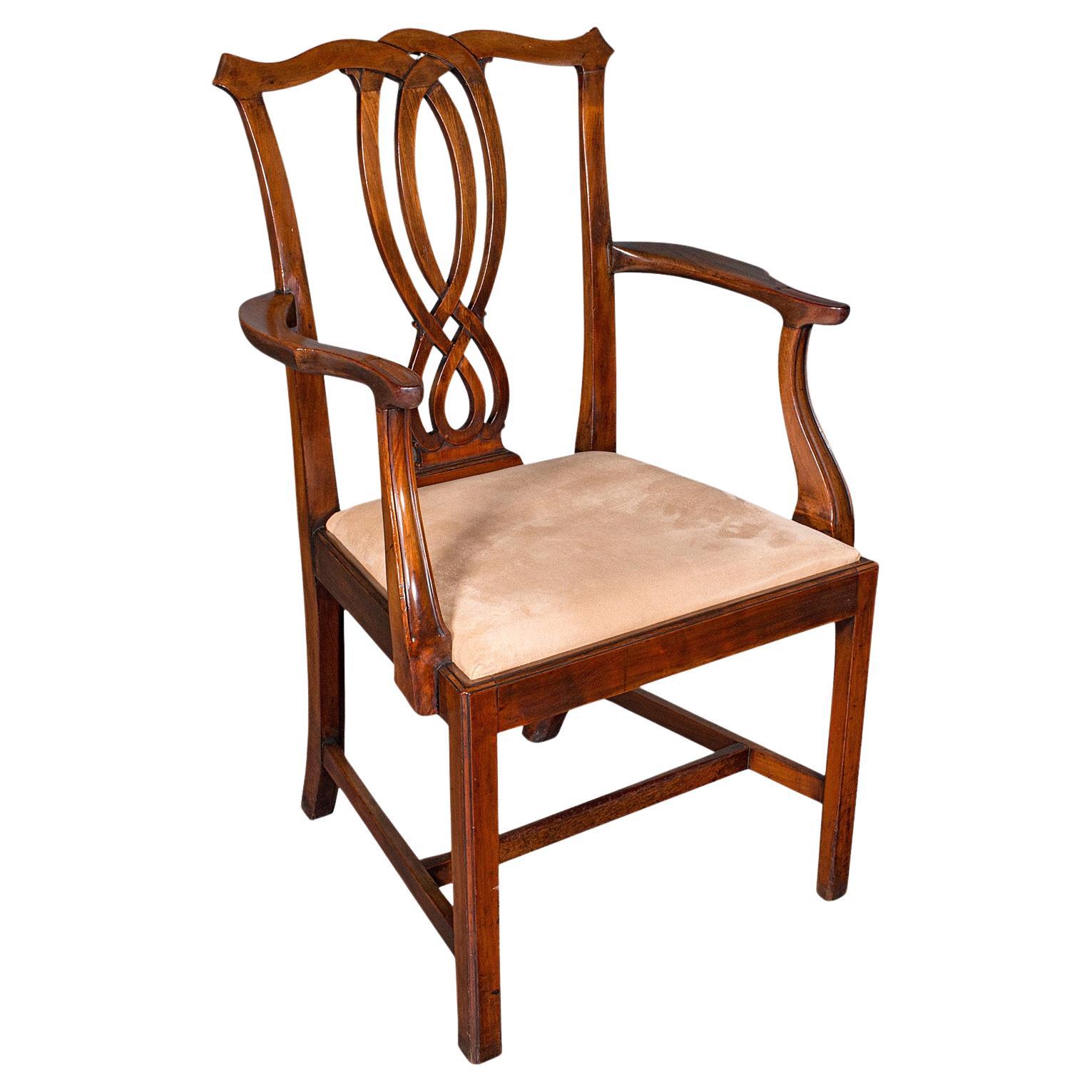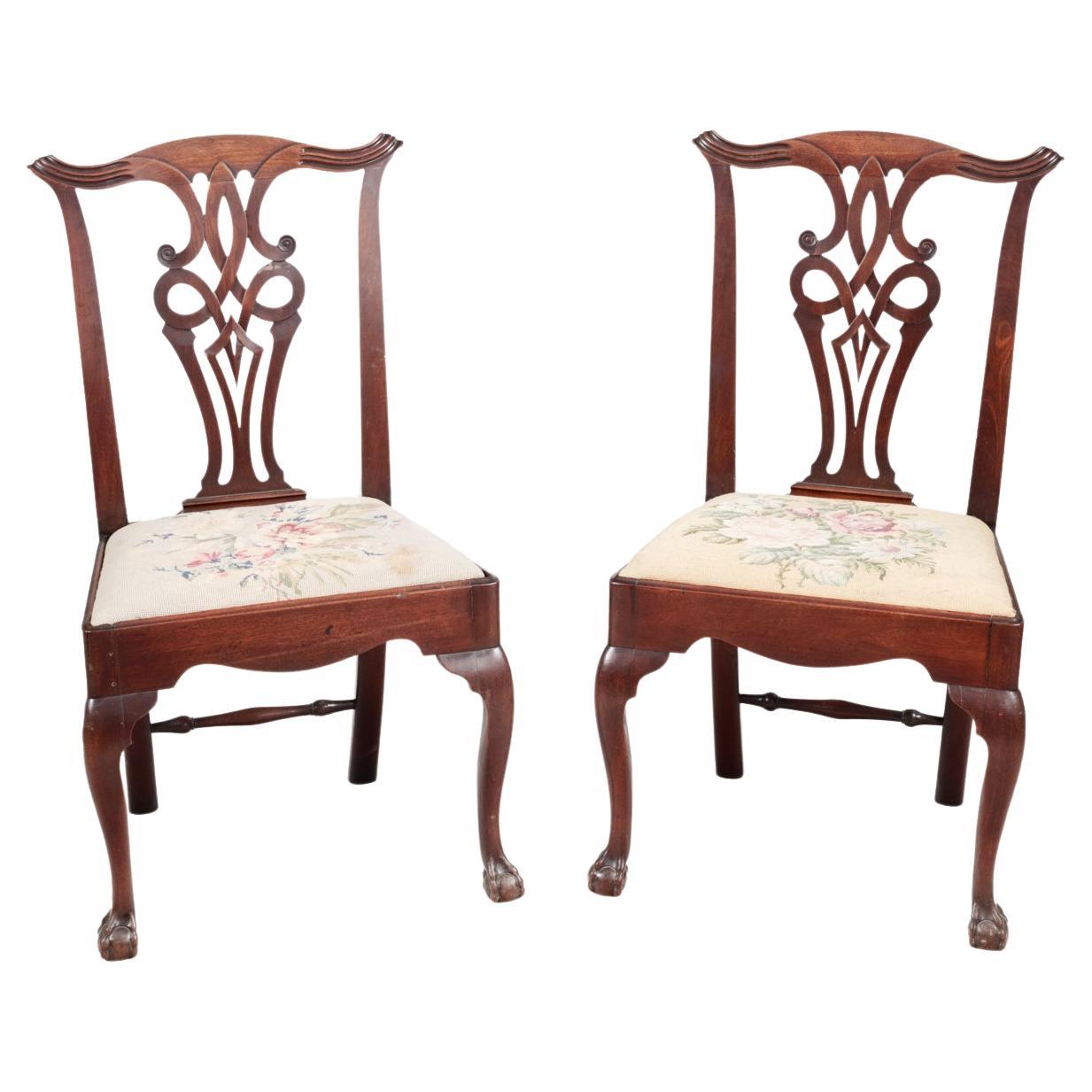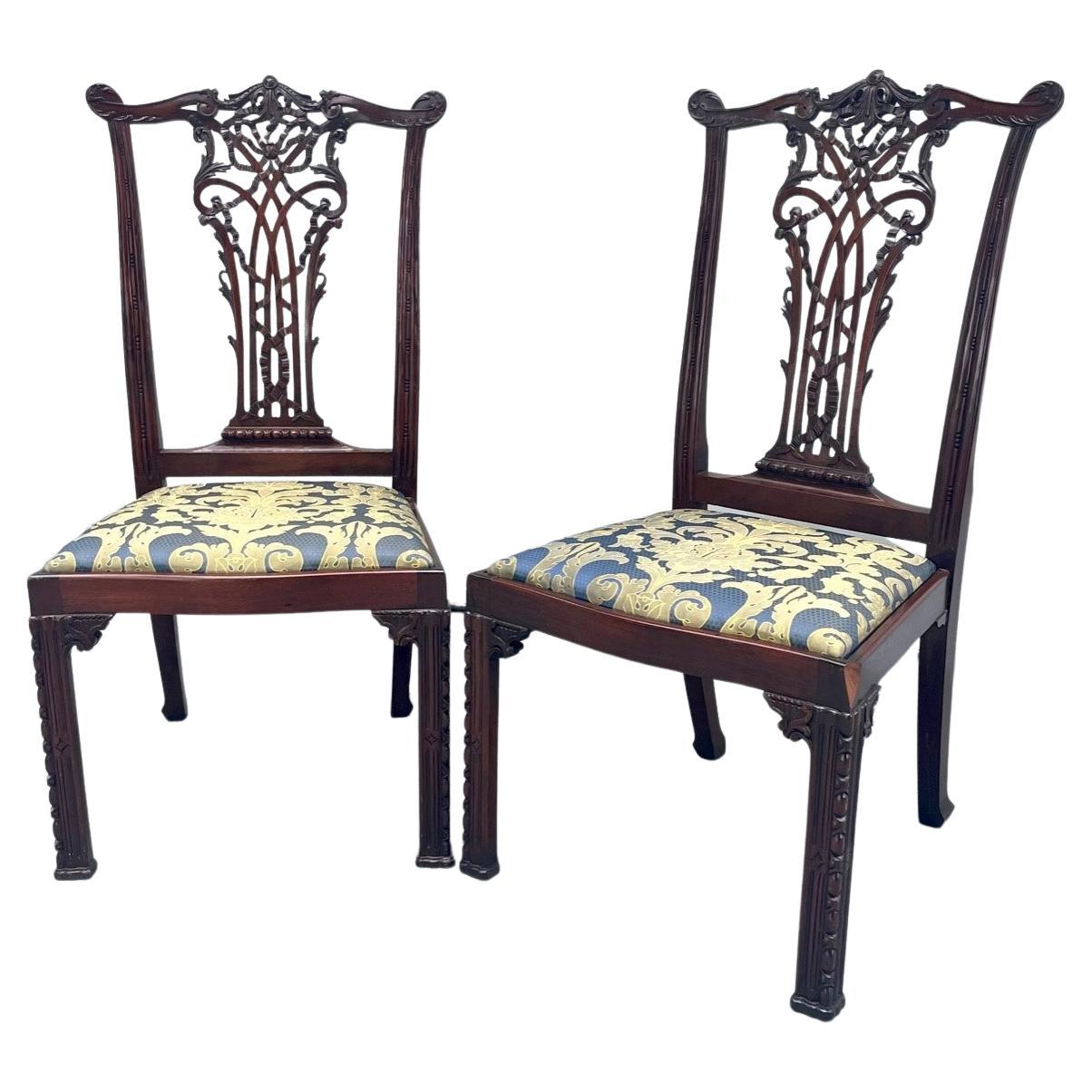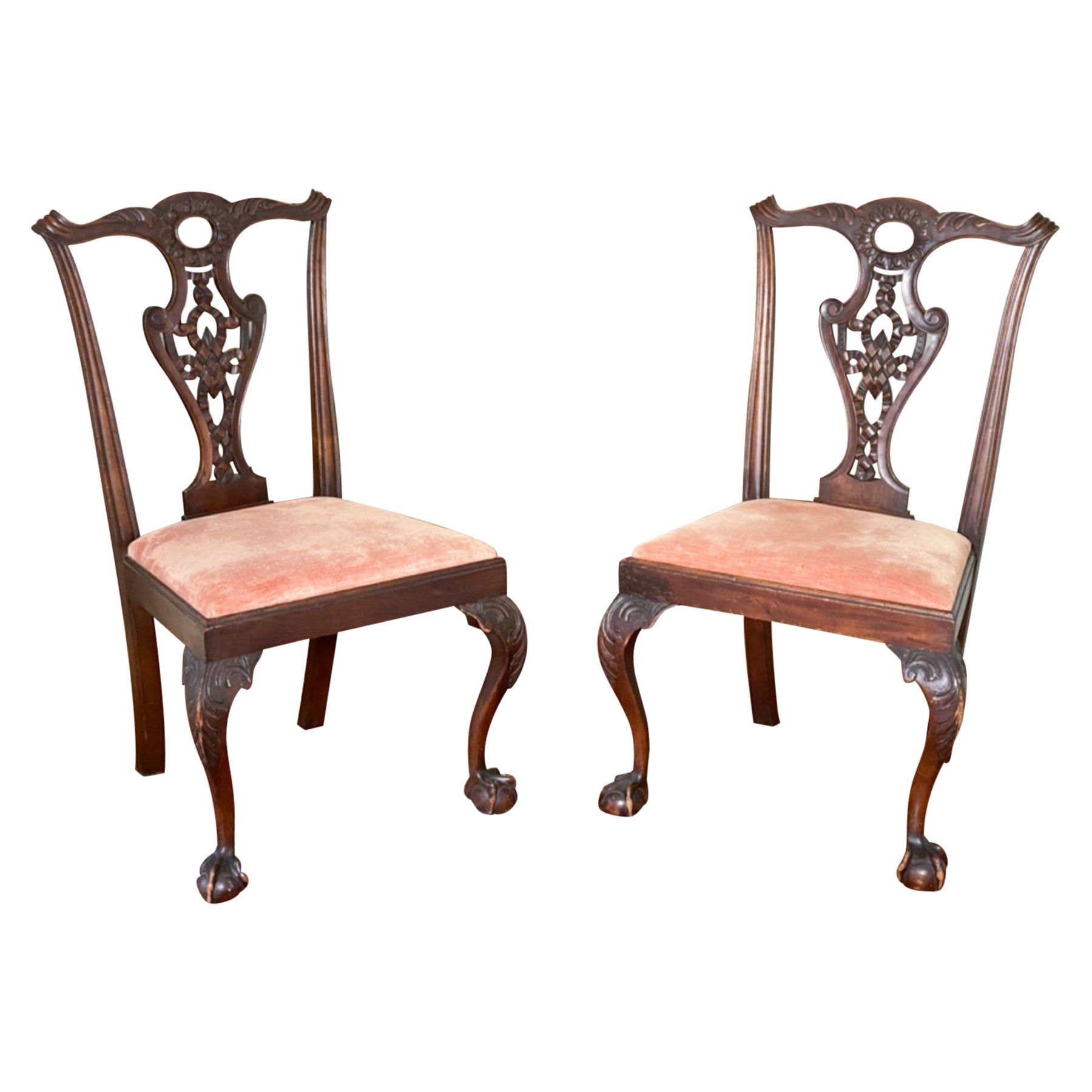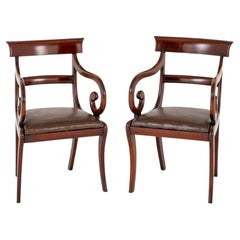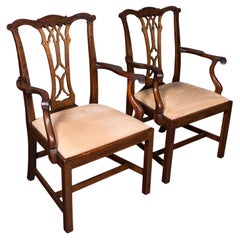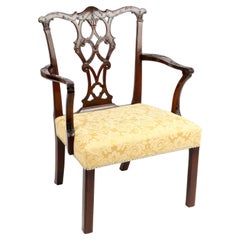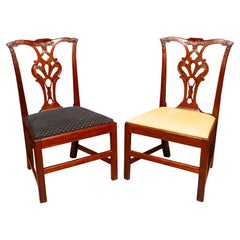
Pair of Chippendale Period Giltwood Elbow Chairs
View Similar Items
1 of 6
Pair of Chippendale Period Giltwood Elbow Chairs
About the Item
- Dimensions:Height: 35.5 in (90.17 cm)Width: 23.5 in (59.69 cm)Depth: 22.5 in (57.15 cm)
- Sold As:Set of 2
- Style:Chippendale (Of the Period)
- Materials and Techniques:
- Place of Origin:
- Period:1770-1779
- Date of Manufacture:1770
- Condition:
- Seller Location:Peterborough, GB
- Reference Number:Seller: 81171stDibs: LU1032810677551
Authenticity Guarantee
In the unlikely event there’s an issue with an item’s authenticity, contact us within 1 year for a full refund. DetailsMoney-Back Guarantee
If your item is not as described, is damaged in transit, or does not arrive, contact us within 7 days for a full refund. Details24-Hour Cancellation
You have a 24-hour grace period in which to reconsider your purchase, with no questions asked.Vetted Professional Sellers
Our world-class sellers must adhere to strict standards for service and quality, maintaining the integrity of our listings.Price-Match Guarantee
If you find that a seller listed the same item for a lower price elsewhere, we’ll match it.Trusted Global Delivery
Our best-in-class carrier network provides specialized shipping options worldwide, including custom delivery.You May Also Like
Pair Regency Elbow Chairs Mahogany Period Furniture
Located in Potters Bar, GB
Pair of mahogany regency elbow chairs.
Regency period
these chairs are raised upon sabre front legs with shaped back legs.
Having lift out seats.
The chairs feature typical shape...
Category
Vintage 1980s Regency Chairs
Materials
Mahogany
Pair Of Antique Morning Room Elbow Chairs, English, Chippendale Taste, Victorian
Located in Hele, Devon, GB
This is a pair of antique morning room elbow chairs. An English, mahogany carver seat in Chippendale revival taste, dating to the late Victorian period, circa 1890.
Superb Chippend...
Category
Antique Late 19th Century British Late Victorian Chairs
Materials
Wood
Chippendale Period Carved Carver/Arm/Desk Chair
By Thomas Chippendale
Located in Folkestone, GB
A particularly fine quality 18th century mahogany Chippendale period mahogany armchair profusely and finely carved to the back and arms with trailing acanthus, flowerheads and 'C' sc...
Category
Antique Mid-18th Century English Chippendale Side Chairs
Materials
Mahogany
Pair Of American Chippendale Walnut Side Chairs
Located in Essex, MA
Each with a carved serpentine crest rail over an open pierced splat. Drop in seat and raised on square section legs with stretchers.
Category
Antique 1780s American Chippendale Chairs
Materials
Walnut
$1,850 / set
Rare Pair of Thomas Chippendale Period 1760 Embroidered Chairs Ornately Carved
By Thomas Chippendale, Thomas Chippendale Jr.
Located in West Sussex, Pulborough
We are delighted to this very rare pair of Thomas Chippendale era circa 1760 Library chairs with period embroidered upholstery
These are a very rare and highly collectible pair of Library chairs, they were made in the Chippendale era and closely after his designs, the fret work carving, ornate legs, all very finely executed by a master craftsman
The upholstery is all original embroidery, the colours are very much of the period and not seen on later reproduction pieces. These are an exceptional example and would be highly prized in any collection
The chairs have been lightly restored to include some work to the carvings, the timber has been sympathetically French polished to ensure none of the original charm and patina has been lost
A period pair of Chippendales by the great man himself (which these could be) would retail for the high hundreds of thousands, however alas Chippendales are only originals if they come with iron clad provenance, a difficult thing to keep hold of for nearly 250 years. One of the chairs has a plaque to the base for Charles Tozer of 25 Brook street London, Mr Tozer was a very well respected Antiques dealer in the early 20th to mid 20th century that specialised in 18th century furniture
Dimensions:
Height 97cm
Width 64cm
Depth 65cm
Please note all measurements are taken at the widest point
Thomas Chippendale (1718–1779) was born in Otley in the West Riding of Yorkshire, England in June 1718. He became a cabinet-maker in London, designing furniture in the mid-Georgian, English Rococo, and Neoclassical styles. In 1754 he published a book of his designs, titled The Gentleman and Cabinet Maker's Director, upon which success he became renowned. The designs are regarded as representing the current British fashion for furniture of that period and are now reproduced globally. He was buried 16 November 1779, according to the records of St Martin-in-the-Fields, in the cemetery since built upon by the National Gallery. Chippendale furniture is much valued; a padouk cabinet that was offered for auction during 2008 sold for £2,729,250.
Life
"A Design for a State Bed" from the Director, 1762. Chippendale was born the only child of John Chippendale (1690–1768), joiner, and his first wife Mary (née Drake) (1693–1729). He received an elementary education at Prince Henry's Grammar School. The Chippendale family had long been involved with the wood working trades and so he probably received his basic training from his father, though it is believed that he was also trained by Richard Wood in York, before he relocated to London. Wood later ordered eight copies of the Director. On 19 May 1748 he married Catherine Redshaw at St George's Chapel, Mayfair and they had five sons and four daughters.
During 1749 Chippendale rented a modest house in Conduit Court, near Covent Garden. In 1752 he relocated to Somerset Court, off the Strand. In 1754 Chippendale relocated to 60–62 St Martin's Lane in London, where for the next 60 years the family business operated, until 1813 when his son, Thomas Chippendale (Junior), was evicted for bankruptcy. During 1754 he also began a partnership with James Rannie, a wealthy Scottish merchant, who put money into the business at the same time as Chippendale produced the first edition of the Director. Rannie and his bookkeeper, Thomas Haig, probably cared for the finances of the business. His wife, Catherine, died during 1772. After James Rannie died in 1766, Thomas Haig seems to have borrowed £2,000 from Rannie's widow, which he used to become Chippendale's partner. One of Rannie's executors, Henry Ferguson...
Category
Antique 1760s English Georgian Side Chairs
Materials
Upholstery, Hardwood
$33,574 Sale Price / set
30% Off
A pair of English 18th century Chippendale period George III armchairs. rare
By Thomas Chippendale
Located in Central England, GB
A most attractive and rare pair of high quality carved mahogany Chippendale period George III armchairs beautifully hand made with some fine and crisp details.
This handsome pair of...
Category
Antique 18th Century English Chippendale Chairs
Materials
Mahogany
Recently Viewed
View AllMore Ways To Browse
1940s Aluminum Chairs
Antique Conversation Chair
African Fabric Chair
Vintage Horn Chair
Antique Embroidered Chair
Antique Handmade Chairs
Antique Indian Chair
Antique Elm Chair
White Painted Desk Chair
Yacht Chairs
Amber Chair
Anglo Indian Chair
Vintage Childs Chair 20th Century
Wooden Chairs Rattan
Animal Shaped Chair
2 Wood Accent Chairs
Ware Chair
1950s Bent Wood Chair
